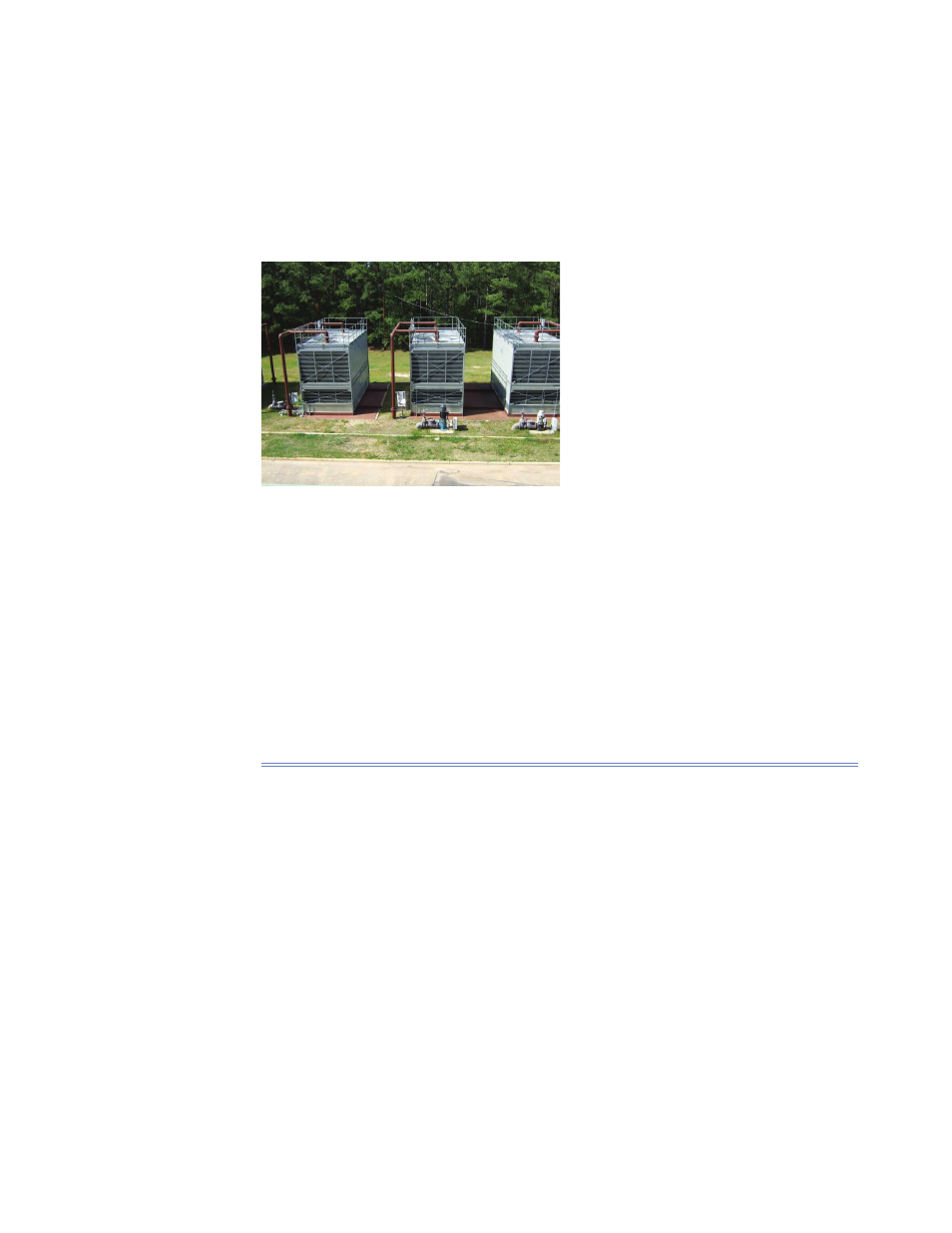Retrotec USACE User Manual
Page 206

D76 ENERGY & PROCESS ASSESSMENT PROTOCOL
is reduced, less air fl ow is needed to achieve the desired supply water tempera-
ture. Thus the fan blades should be adjusted for the load or season for most
effi cient energy use. This can be done manually with adjustment a few times a
year, or on large towers it can be done automatically as conditions change.
D.4.2.24 No Duct at Fan Discharge for Velocity Recovery
(Ineffi ciency)
Figure D126. Cooling tower fans with no
discharge duct.
Most cooling towers are an induced draft type with the fan located at the point
of discharge from the tower. It is generally placed on top of the tower; these are
called counterfl ow or crossfl ow towers. The cooling tower fan thus discharges
the tower air into atmosphere above the tower. For most effi cient operation
there needs to be a short duct attached to the fan’s discharge to recover the
fan’s velocity pressure. If there is no duct at the fan discharge (Figure D126),
the velocity pressure is not available to the fan system and extra energy is re-
quired for the desired air fl ow.
D.4.3 Compressed Air Systems
D.4.3.1 Running Standby Dryer (Waste)
In large central compressed-air systems, there are several air compressors
and dryers that can be energized to satisfy the compressed air demand
(Figure D127). The amount of equipment that operates depends on the
compressed air demand, which can vary signifi cantly over time. To be able
to satisfy this demand, some of the equipment may be in standby mode
